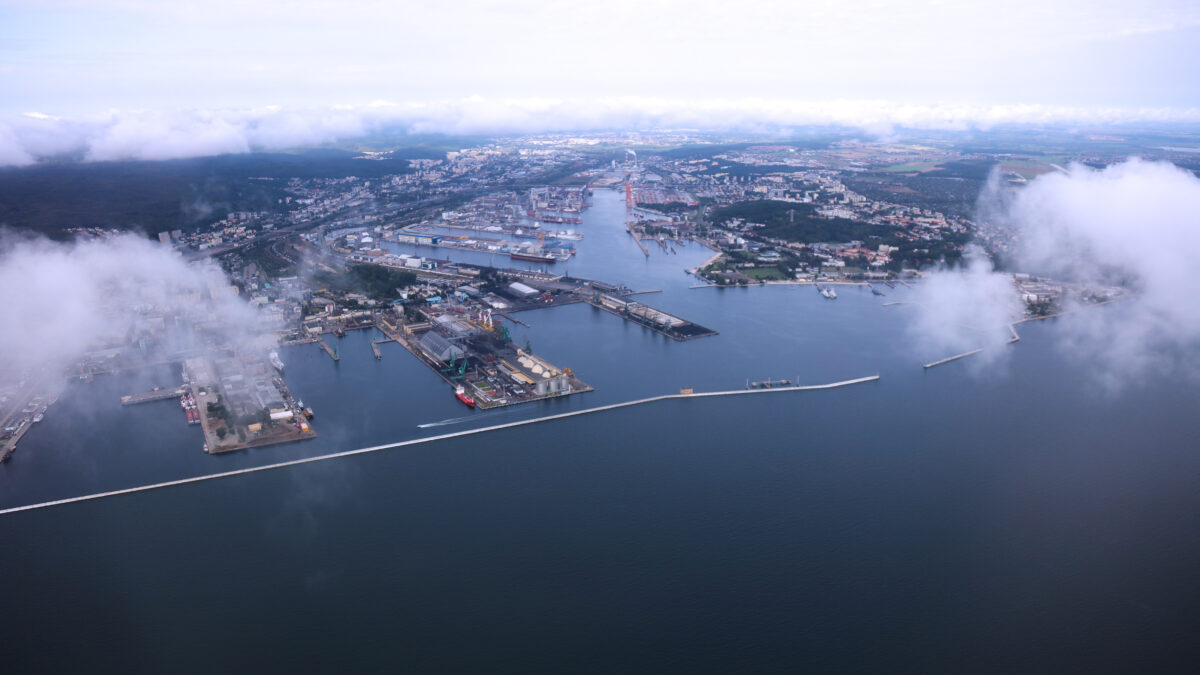
Power from the port wharf
13 September 2024
Oil independence
13 September 2024In 2023, Poland’s major seaports (Gdańsk, Gdynia, Szczecin, Świnoujście, Police) reached a record high by handling a total of more than 146 million tons of cargo. The result was due to a significant increase in the volume of liquid fuels at the Gdańsk port, as well as a jump in grain trade. At the same time, declines in other cargo groups were recorded already last year. This was particularly evident in the second half of 2023 (70.1 million tons), which represented a reversal of the upward trend observed since 2020.
Unfortunately, the first half of 2024 ended with another decline. Although transshipments of liquid fuels, general cargo and grain grew again, restrictions in other groups resulted in a 10.9% decrease in volume. This translated into transshipments totaling 67.96 million tons. The main reason for this was the dramatically declining coal turnover. In H1 2023, it was 14.30 million tons, while now it is only 4.45 million tons. These declines basically affected all ports, so the global market share structure did not change significantly. The Port of Gdańsk continues to dominate, which, despite losing 0.7 p.p. of its share, is now responsible for handling 56.1% of cargo weight. Indeed, it is responsible for 79% of liquid fuel handling and 73.3% of coal handling. The second position with a share of 23.4% is held by the ports of Szczecin and Świnoujście, which were affected by a slight decline in shares (0.2 p.p.). Gdynia, on the other hand, was gaining. The 0.8 pp increase translated into a market share of 20.2%. The Port of Police recorded a systematic reduction in volume in recent years. The current figure of 215,000 tons marks a renewed decline, although not as deep as a year ago. As a result, Police gained 0.3% market share. It is worth mentioning that in the past, Police’s annual transshipments exceeded 2 million tons.
Port of Gdańsk
The Port of Gdańsk ended H1 2024 with a result of 38.1 million tons (-12.1%). However, it was the result of multifaceted changes in the various cargo groups. As mentioned, the liquid fuels group gained the most (+1.77 million tons), with a total of 20.1 million tons handled (+9.6% compared to H1 2023). This is, of course, a historic record, especially important because it is related to exceeding the 20 million t level. Handling of general cargo increased by nearly 500,000 t, which was handled at 26.2 million t (+4.5%). A significant share of this was due to increases in container handling, where 1.07 million TEUs were handled in Gdańsk in H1 2024. This represents a 7.9% increase over H1 2023 and a return to +1 million TEU levels. Grain transshipments were also on the rise. In the first half of this year, it was 1.51 million tons (+10.3%). Other cargo groups remain on the downward side, with the greatest impact recorded in coal turnover. The decline of nearly 70% resulted in the disappearance of as much as 7.3 million tons of this commodity from the port in transshipment. Of the 10 million t, just over 3 million t remained. There was an equally high relative decline in timber and ore, although here it was only 68.5% and 64% respectively, amounting to a total loss of only 180,000 t. In the case of other bulk cargoes, the relative decline of 10.9% translated into a volume of 1.53 million tons (-186,000 tons).
Ports of Szczecin and Świnoujście
The result of 15.92 million tons in H1 2024 was achieved by the ports of Szczecin and Świnoujście. In this case, the recorded decline in turnover was 11.7%, which in absolute terms can be translated into 2.16 million tons. In the West Pomeranian ports, declines were recorded in virtually all cargo groups; only timber with an increase of 77 thousand tons increased in volume to 171.4 thousand tons (+81.2%). As in Gdańsk, one of the main factors here was coal handling. The 64.5% decline translated into a loss of 1.23 million tons of raw material, which resulted in total coal handling of 0.62 million tons. The second cargo group recording relatively large reductions was liquid fuels. In this case, the 9.9% decline meant a turnover of 3.77 million tons. There was a relatively small decrease in general cargo (-2.3%), which ended up at 8.05 million tons (-185,000 t). On the other hand, a large 32.2% volume loss for ore translated into a 177,000 t reduction in transshipments. Relatively small reductions affected further cargo groups, such as other bulk cargoes (-6.6%) and grain (-5.2%). Finally, the port handled 1.77 million tons of other bulk cargoes and 1.18 million tons of grain in the first half of the year.
Port of Gdynia
Gdynia recorded the smallest loss in transshipment volume among Polish ports. The 1 million t decrease in turnover meant a 7.2% decline, and gave a result of 13.71 million t in the first half of the year. Here, analogous to other ports, the factor determining the final result was a reduction of nearly 71% in coal turnover. The 1.35 million t reduction in the stream meant handling only 553,000 t of this raw material. Liquid fuels, timber and other bulk cargoes were also negatively affected. For fuels, the 8.3% decline translated into 1.59 million tons of transshipment. The relative change for timber is significantly higher (-49.2%), although it represents a volume reduction of 56 thousand tons. As a result, timber handling in the first half of the year amounted to 50.8 thousand tons. An even smaller level of change concerned other bulk cargoes, where a decrease of 4% meant a reduction in volume of just over 20 thousand t. Final transshipments in this group amounted to 490 thousand tons. The cargo group that contributed to the reduction in volume losses was general cargo. An increase of 6.6% was recorded here, which yielded an additional 500,000 tons. As a result, turnover reached 7.71 million t in the first half of the year. The positive change was mainly due to improvements in the container handling market, where a 10% gain was observed compared to the first half of previous year. A small 0.8% increase in turnover was also recorded in grain transshipments. In this case, an additional 26,000 tons helped bring the total to 3.31 million tons.
Port of Police
The Port of Police is still struggling to rebuild its transshipment volumes. After a very difficult first half of 2023 and an increase in activity in the second part of the year, it is again recording low transshipments. The first half of the year ended with 215 thousand tons. Referring to the January-June 2023 period, it can be pointed out that gains were recorded in the handling of other bulk cargoes, which totaled 192 thousand tons. In this case, the increase was 57.3%, although this is mainly due to very low cargo turnover a year earlier. Interestingly, Police also gained in the area of coal handling (+191.6%). However, the increase was achieved at a very low absolute level, with only 22,000 tons handled. The third and final group handled at the port was steel structures. Their total weight reached 312 t. The indicated data show the structure of transshipments, with other bulk cargoes accounting for 89.5% of total turnover.





